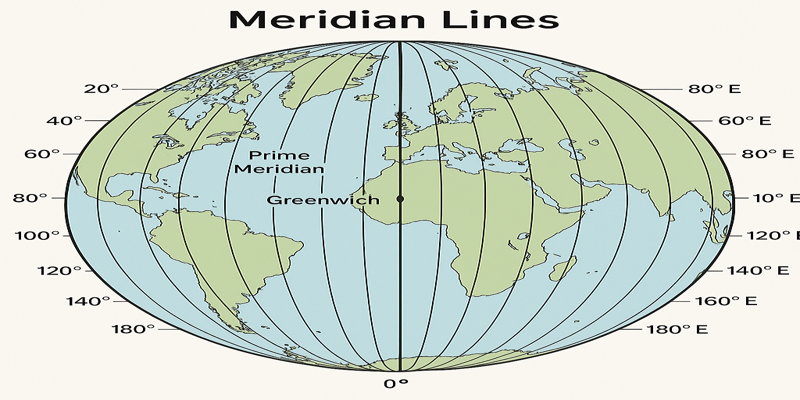In organisational management, several interrelated elements guide a company’s actions and decisions, aligning its efforts with long-term aspirations. These components include vision, mission, goals, values, strategies, objectives, and tactics. Each element plays a pivotal role in shaping organisational success, ensuring alignment with the overarching purpose and fostering a consistent approach to both internal and external decision-making. Understanding these elements is crucial for sustaining a competitive advantage and guiding an organisation towards its strategic objectives.
1.0 Vision
Vision is a foundational aspect of organisational strategy, representing long-term aspirations and desired outcomes. It serves as a compass, offering direction and inspiration. According to Kotter (1996), a vision statement should be concise, forward-thinking, and ambitious, helping to align efforts and motivate stakeholders towards a common goal. A strong vision statement fosters a sense of purpose and direction, not only for employees but also for external stakeholders. The forward-looking nature of a vision provides clarity regarding the organisation’s future path, which is essential for maintaining long-term sustainability and competitive advantage.
A good example is Tesla’s vision of “creating the most compelling car company of the 21st century by driving the world’s transition to electric vehicles.” This vision statement is ambitious, reflecting long-term aspirations while inspiring innovation and sustainability efforts within the company. Crucially, the vision statement is designed for internal use, guiding the company’s overall trajectory and serving as a beacon for employee actions and decision-making processes.
2.0 Mission
While the vision outlines long-term aspirations, the mission defines the fundamental purpose of an organisation, focusing on its reason for existence. A mission statement answers the questions of what an organisation does, who it serves, and why its work matters. According to Bart (1998), a mission statement acts as a touchstone for organisational activities, serving as a reference point for decision-making. Mission statements tend to be outward-facing, meaning they are meant for both internal guidance and external communication.
A well-crafted mission statement provides a clear framework for employees, helping to align day-to-day actions with broader organisational goals. For example, Google’s mission statement, “to organise the world’s information and make it universally accessible and useful,” provides a framework that guides not only the development of products and services but also corporate strategy and resource allocation. Externally, it communicates the company’s purpose and values to customers, shareholders, and other stakeholders, reinforcing trust and transparency.
3.0 Goals
Goals are broad, overarching targets that organisations aim to achieve within a specified timeframe. These goals are directly aligned with both the mission and the vision, providing direction and focus. Armstrong (2012) asserts that goals represent the key outcomes or results that guide resource allocation and prioritise activities within an organisation. Goals are essential for translating the organisation’s mission into actionable priorities, serving as a bridge between broad organisational aspirations and specific objectives.
Typically, goals cover areas such as financial performance, market growth, and product development. For example, a company’s goal might be to achieve a 20% increase in market share over the next five years. This goal provides a clear target, helping to focus resources and decision-making towards achieving this outcome. Setting such goals is crucial for long-term planning and ensuring that every aspect of the organisation’s operation works towards a unified objective.
4.0 Values
Organisational values are the core beliefs, principles, and ethical standards that guide behaviours, decisions, and actions within an organisation. Schein (2017) highlights that values often encompass elements such as integrity, transparency, accountability, and respect, which are critical for shaping the culture of the organisation. Organisational values not only influence internal decision-making but also determine how an organisation is perceived externally, including its reputation and standing within the community.
Values are essential for fostering a cohesive corporate culture. For example, companies like Patagonia emphasise environmental responsibility and ethical practices as core organisational values. These values shape how employees interact with one another, how products are developed, and how stakeholders are engaged. Denison (2020) further explains that a well-defined value system enhances organisational effectiveness, particularly in fostering innovation, customer focus, and diversity.
Organisations that actively live their values tend to be more successful in the long term, as they build stronger relationships with both employees and external stakeholders. Bhattacharya, Korschun, and Sen (2008) argue that organisational values aligned with corporate social responsibility initiatives further strengthen stakeholder-company relationships, reinforcing the organisation’s commitment to ethical practices.
5.0 Strategies
Strategies represent high-level, long-term plans or approaches designed to achieve organisational goals. According to Porter (1996), strategies are essential for creating a competitive advantage and effective market positioning. Strategies focus on leveraging internal capabilities while responding to external opportunities and threats. They encompass decisions regarding resource allocation, market penetration, and competitive positioning.
Strategies can take various forms, such as cost leadership, differentiation, or focus strategies, depending on the organisation’s competitive environment and goals. For example, Apple employs a differentiation strategy, focusing on innovation and high-quality design to distinguish its products from competitors. This long-term approach enables the company to command premium prices and foster customer loyalty.
The importance of strategy lies in its ability to provide a blueprint for organisational actions over a prolonged period, ensuring that resources are optimally deployed to achieve key objectives. Without a well-defined strategy, an organisation risks losing direction, wasting resources, and diminishing its competitive edge.
6.0 Objectives
Objectives are the specific, measurable, achievable, relevant, and time-bound (SMART) targets that support the achievement of goals. Doran (1981) explains that objectives provide concrete steps or milestones that help guide decision-making and resource allocation. While goals provide broad targets, objectives break them down into actionable and quantifiable steps.
For example, if a company’s goal is to increase revenue by 20% in five years, an objective might be to increase customer acquisition by 10% over the next year. This objective is specific (customer acquisition), measurable (10%), achievable (realistic target), relevant (aligned with revenue growth), and time-bound (within a year). Having SMART objectives allows organisations to monitor progress, make adjustments, and ensure that resources are being used effectively to achieve long-term goals.
7.0 Tactics
Tactics are the specific actions, processes, or methods used to execute strategies and achieve objectives. Mintzberg (1979) emphasises that tactics are critical for translating high-level strategies into day-to-day operational plans. While strategies are long-term and overarching, tactics are focused on the short-term and immediate execution of plans.
For example, if a company’s strategy involves expanding into a new market, tactics might include launching a localised marketing campaign, forming strategic partnerships with local distributors, or hiring a regional sales team. These tactical steps are essential for ensuring that the strategy is implemented effectively, turning broad objectives into tangible outcomes.
Tactics are crucial for ensuring that the organisational strategy is realised in practice. Without well-planned tactics, even the most robust strategies may fail due to poor execution or lack of alignment with day-to-day operations.
Vision, mission, goals, values, strategies, objectives, and tactics each play a crucial role in guiding an organisation towards success. Vision and mission provide the overarching direction and purpose, while goals and values shape the organisational culture and strategic priorities. Strategies outline the long-term approaches, with objectives and tactics providing the concrete steps and actions necessary to achieve them. By ensuring alignment between these elements, organisations can foster consistent, effective decision-making and ensure long-term sustainability and success.
References:
Armstrong, M. (2012) Armstrong’s Handbook of Strategic Human Resource Management. Kogan Page Publishers.
Bart, C. K. (1998) “Mission Statement Content and Hospital Performance In the Canadian Not-For-Profit Health Care Sector”. Health Care Management Review. 23(3), pp. 83-94.
Bhattacharya, C. B., Korschun, D., & Sen, S. (2008) “Strengthening Stakeholder–Company Relationships Through Mutually Beneficial Corporate Social Responsibility Initiatives”. Journal of Business Ethics. 85(2), pp. 257-272.
Denison, D. R. (2020) “Corporate Culture and Organisational Effectiveness: Is Asia Different from the Rest of the World”? Organisational Dynamics. 49(1), pp. 59-67.
Doran, G. T. (1981) “There’s a S.M.A.R.T. way to write management’s goals and objectives”. Management Review. 70(11), pp. 35-36.
Kotter, J. P. (1996) Leading Change. Harvard Business Review Press.
Mintzberg, H. (1979) The Structuring of Organisations: A Synthesis of the Research. Prentice-Hall.
Porter, M. E. (1996) ‘What is Strategy?’. Harvard Business Review. 74(6), pp. 61-78.
Schein, E. H. (2017) Organisational Culture and Leadership. 5th ed. John Wiley & Sons.













